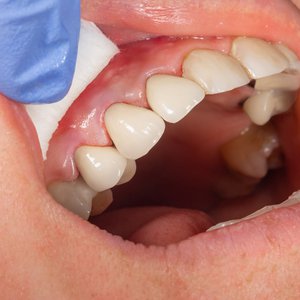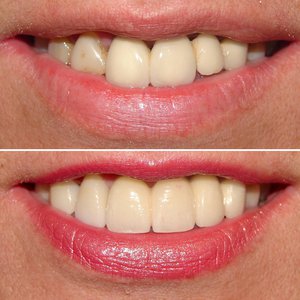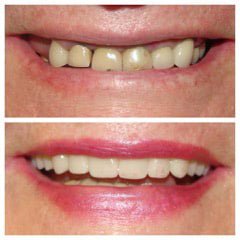Dental Bridges in North York
Replacing missing teeth without dental surgery

What is a Dental Bridge?
A dental bridge is a tried-and-true way to replace one or more lost teeth, restoring your confidence to grin, chew, and talk without thought. Imagine an artificial tooth or teeth (known as a pontic) filling the void, firmly supported on the natural teeth or implants closest to the gap by crowns. Restoring your smile feels like fitting a perfect puzzle piece.
This procedure makes your teeth seem entire again, stops your other teeth from falling out of alignment and supports facial structure by bridging the gap. You should stop thinking about embarrassing situations or battling with eating your preferred meals.
Designed to appear and feel as near to genuine teeth as possible, dental bridges are a sensible and efficient approach to replace lost teeth. This offers back what you have been lacking and fits your way of life.
Why Choose Dental Bridges?
Losing a tooth affects your whole bite, speech, and even face shape, so it is more than a cosmetic concern. Here are some reasons dental bridges are a great option:
Reclaim Your Smile
Your confidence may suffer with missing teeth. A dental bridge helps your teeth seem natural, enabling you to grin without restrictions.
Keep Your Teeth in Line
Missing teeth can cause surrounding teeth to migrate, resulting in problems with alignment. A bridge prevents that.
Protect Your Facial Structure
Tooth loss can lead to sagging or hollow cheeks over time. A bridge helps maintain your jawline and overall appearance.
Eat and Speak Comfortably
Struggling with chewing or pronouncing words? A bridge restores full functionality.
A Quick, Reliable Fix
Bridges provide a faster fix for missing teeth and are less intrusive than other procedures.
Types of Dental Bridges
Dental bridges are available in a variety to fit your situation. The breakdown looks as follows:
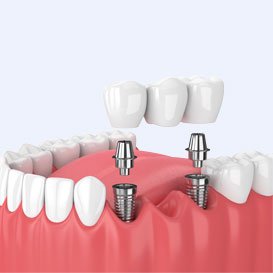
Fixed Dental Bridges
- These are permanently cemented to the teeth on either side of the gap.
- They’re sturdy, long-lasting, and ideal for someone looking for a stable, low-maintenance solution.
- You won’t need to remove them—they function just like your natural teeth.
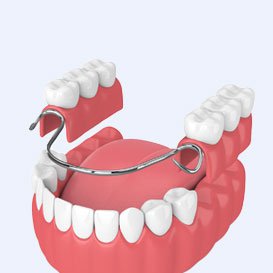
Removable Bridges:
- Designed for easy removal, these bridges are ideal if you prefer a more flexible option.
- While they’re less stable than fixed bridges, they’re simpler to clean and adjust.
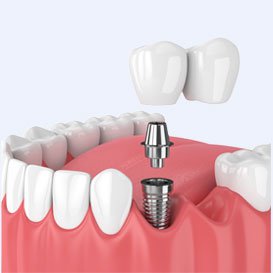
Specialized Bridges:
- Cantilever Bridges: Anchored on one side, these are a great solution when only one tooth is available to support the bridge.
- Implant-Supported Bridges: Instead of relying on natural teeth, these bridges are attached to dental implants, offering exceptional stability and durability.

The Dental Bridge Procedure
Getting a dental bridge is not as frightening as it would appear. This is a well-ordered procedure meant for your convenience and gratification.
- The First Step—Consultation:
Your dentist examines your dental health, talks about your needs, and suggests the best kind of bridge for you at this visit. To guarantee a personalized fit, they will scan or take imprints.
- Preparation Time:
To accommodate the bridge's anchoring crowns, the teeth on each side of the space are modified. At this point, any implants that may be necessary are inserted.
- Crafting Your Bridge:
Based on your impressions, a lab designs a personalized bridge exactly matches your natural teeth. In the meantime, you could get a temporary bridge to wear.
- Placement Day:
The customized bridge is meticulously fitted and sealed in place. Changes are made to guarantee it feels natural and performs as expected.
- Follow-Up and Care:
Your dentist will plan follow-ups to ensure everything operates once the bridge is in place.
Benefits of Dental Bridges
Dental bridges change your attitude to your smile and dental health, not only covering gaps. They provide these:
A Confident Smile
No more hiding your teeth or feeling self-conscious.
Improved Chewing and Speaking
Enjoy your favourite meals and pronounce words clearly again.
Prevents Teeth from Drifting
Keeps your bite aligned and avoids long-term dental complications.
Non-Invasive Solution
A quicker, simpler alternative to dental implants.
Supports Jaw and Facial Health
Maintains a youthful, healthy appearance by preventing bone loss.

Is a Dental Bridge Right for You?
Is a dental bridge the best option for you? Presumably, you would be an excellent fit if you:
- You need at least one tooth missing, but you need healthy teeth in the area to serve as a bridge's anchor.
- Would rather not have implants done surgically.
- Looking for an answer that takes into account price, practicality, and aesthetics.
On the other hand, there could be better alternatives to consider in cases where gum disease, severe tooth decay, or an absence of supporting teeth are issues. Talking to your dentist will help you understand your options and make sure you're doing the correct steps.


Aftercare for Dental Bridges
Looking after your dental bridge is simple:
- Focus on the bridge region and brush twice a day.
- To clean beneath and around the bridge, use interdental brushes or floss threaders.
- Steer clear of eating tough or sticky items that can compromise the bridge.
- See a dentist often for cleanings and corrections.
Your dental bridge should last more than ten years with appropriate maintenance, thereby maintaining your oral health and smile.
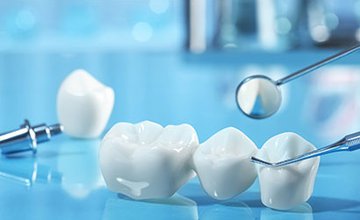
Cost of Dental Bridges
The cost of a dental bridge depends on factors like:
- Materials: Porcelain and zirconia are higher-end options, while metal is more budget-friendly.
- Number of Missing Teeth: Larger bridges are more complex and costly.
- Insurance: Many plans cover part of the cost, depending on your policy.
During your visit, your dentist will give a thorough estimate and go over payment choices.

Schedule Your Appointment for a Dental Bridge Consultation
Get over the fear of losing a tooth. Dental bridges may restore your self-esteem and smile at our North York practice. Feel free to ask any questions you may have and be assured that our team is here to help you during the entire process. Find out how a dental bridge may improve your life—one tooth at a time—by scheduling your appointment now.Frequently Asked Questions (FAQ)
Dental bridges are built to be durable, and with proper care, they can last anywhere from 10 to 15 years—or even longer. Regular brushing and flossing, combined with routine dental check-ups, help ensure their longevity. However, factors like your oral hygiene habits, diet, and the condition of the supporting teeth or implants can impact how long the bridge stays in top condition. To maximize its lifespan, it’s essential to follow your dentist’s advice on maintenance and care.
The process of getting a dental bridge is designed to be as comfortable as possible. Local anesthesia is used during the preparation phase to numb the area, ensuring you won’t feel pain. While some patients may experience mild sensitivity or soreness afterward—especially if the surrounding teeth were reshaped—this typically subsides within a few days. Your dentist may recommend over-the-counter pain relievers to ease any discomfort, but the procedure itself is generally straightforward and well-tolerated.
While dental bridges are considered a long-term solution, they aren’t permanent in the same way as dental implants. Fixed bridges are securely cemented in place and can last many years with proper care, but they may eventually require replacement due to natural wear, changes in the supporting teeth, or shifting in your bite. Regular dental visits will help monitor the condition of your bridge and ensure it continues to function properly for as long as possible.
